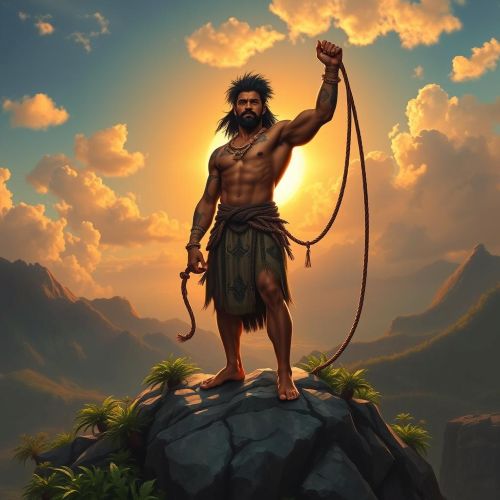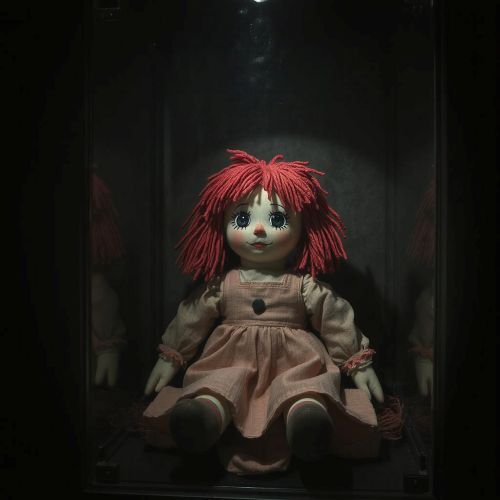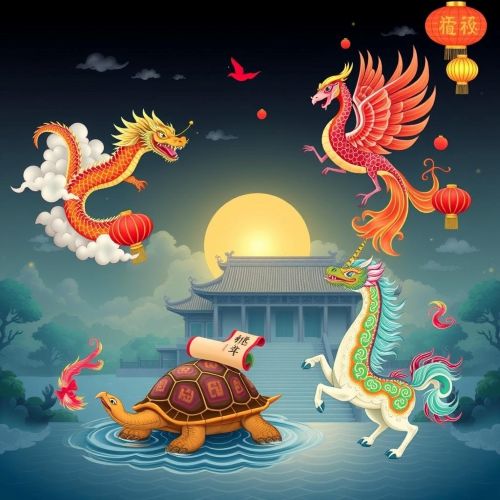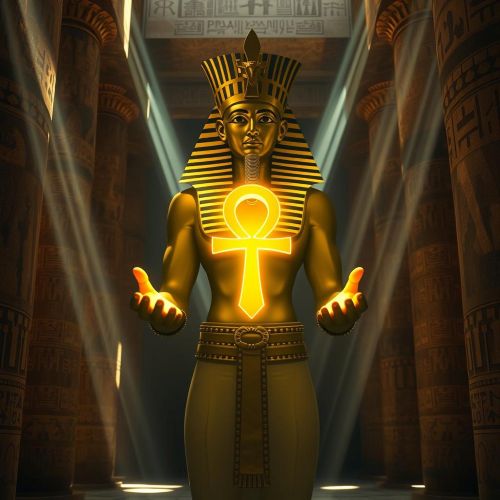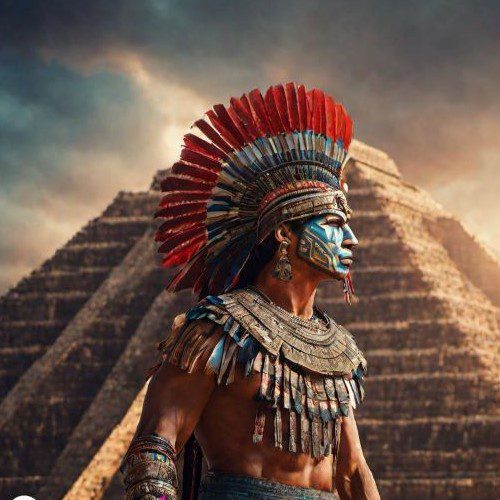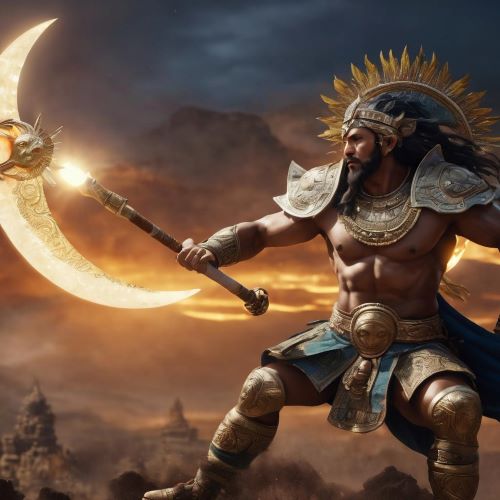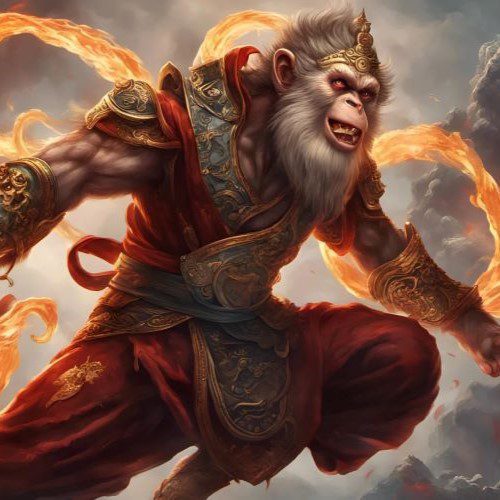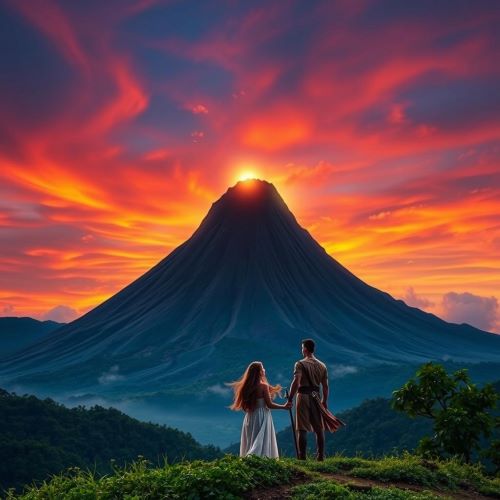Maui and the Sun: The Legend of the Demigod Who Tamed Time
Maui, the daring trickster and demigod from Polynesian mythology, is one of the most celebrated cultural heroes across the Pacific Islands. Known for his incredible feats that benefit humankind, one of Maui’s most iconic adventures involves an epic battle—not with monsters or men—but with the sun itself. This ancient myth, passed down through generations in Hawaii, Aotearoa (New Zealand), Tahiti, and beyond, showcases Maui’s strength, wit, and his deep care for his people.
The Problem of the Rushing Sun
In ancient times, Polynesians depended on the sun for everything—from growing crops to fishing and daily survival. According to the myth, the sun used to race across the sky so quickly that there was hardly enough daylight for people to work, gather food, or even live a normal day.
The people struggled under the burden of this fleeting daylight. Crops wilted, fishing became difficult, and daily life was rushed and chaotic. Recognizing the suffering around him, Maui, the clever and courageous demigod, decided to intervene. He vowed to tame the sun and give his people longer days.
Preparing for the Impossible
Maui was not one to act without a plan. In most versions of the story—especially those from Hawaiian and Māori traditions—he consults his elders, including his wise mother, Hina, who also suffers from the lack of daylight while working to dry her bark cloth.
To succeed in this nearly impossible feat, Maui enlisted the help of his brothers. They braided strong flax ropes and crafted nooses durable enough to withstand the blazing heat of the sun. Together, they journeyed to the summit of Haleakalā in Hawaii (meaning “House of the Sun”) or Maunga-nui in Māori stories—sacred peaks where the sun rose each day.
Lassoing the Sun
As dawn approached, Maui and his brothers lay in wait. When the first rays of the sun peeked over the horizon, Maui leapt out, capturing its blazing rays with his ropes. A fierce battle followed. Maui wrestled the sun, who struggled and threatened to burn everything in its path. But Maui, using his enchanted jawbone club and unshakable resolve, subdued the sun and demanded a deal.
In Hawaiian versions, he struck the sun with the magical weapon until it agreed to move more slowly for half the year, giving the islands longer days in summer and shorter ones in winter—a mythological explanation for seasonal change.
The Sun’s Promise and Maui’s Legacy
Reluctantly, the sun agreed. From that day on, it moved more slowly across the sky, gifting humanity with longer daylight hours and a more balanced life. This triumphant act cemented Maui’s status as a culture hero—a figure who uses his divine gifts not for personal gain, but to uplift his people.
The story of Maui and the sun continues to be one of the most enduring legends of Polynesian mythology. It reflects the values of resourcefulness, bravery, and the importance of harmony between nature and humankind.
Variations Across the Pacific
While the core story remains similar, each island group adds its own cultural flavor to the myth. In Māori mythology, Maui is known as Māui-tikitiki-a-Taranga, and the sun is called Ra. The myth emphasizes Maui’s intelligence and determination, teaching that great challenges can be overcome with careful planning and courage.
In Samoa, the story is more metaphorical, where the taming of the sun represents the people’s connection to the environment and the respect for their deities. In Tahiti, Maui is sometimes replaced by his father or another sibling, further reflecting the flexibility and oral richness of Polynesian storytelling.
Modern Relevance and Cultural Significance
Today, Maui’s tale is more than just a legend—it’s a symbol of the Pacific Islander identity. The myth is taught in schools, celebrated in chants (mele), hula, and oral traditions, and has even made its way into popular culture. Disney’s Moana, for instance, features a bold, cheeky version of Maui voiced by Dwayne Johnson, introducing his feats—including pulling down the sun—to a global audience.
The legend also serves as a spiritual reminder of the Polynesian people’s relationship with nature. It encourages reverence for the sun, sky, and Earth, and emphasizes the impact one individual can have when acting selflessly for their community.
Conclusion
The story of Maui and the sun is a cornerstone of Polynesian mythology—vivid, powerful, and inspiring. It speaks of bravery, cleverness, and compassion, wrapped in cosmic drama. Whether seen as a literal tale or a metaphor for man’s battle to live in harmony with nature, Maui’s triumph over the sun continues to shine brightly in the hearts of those who hear it.


